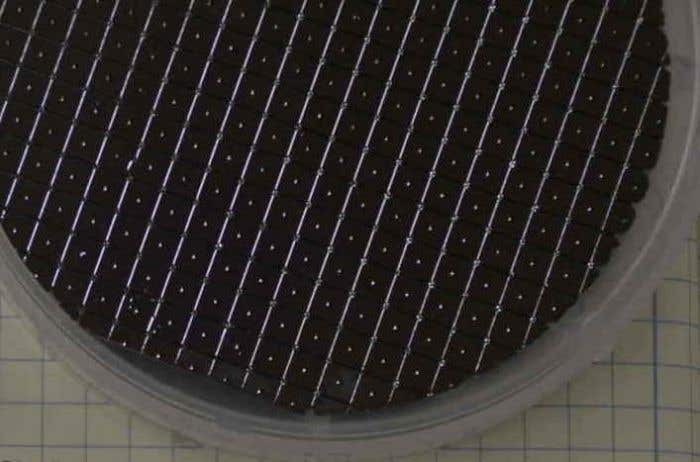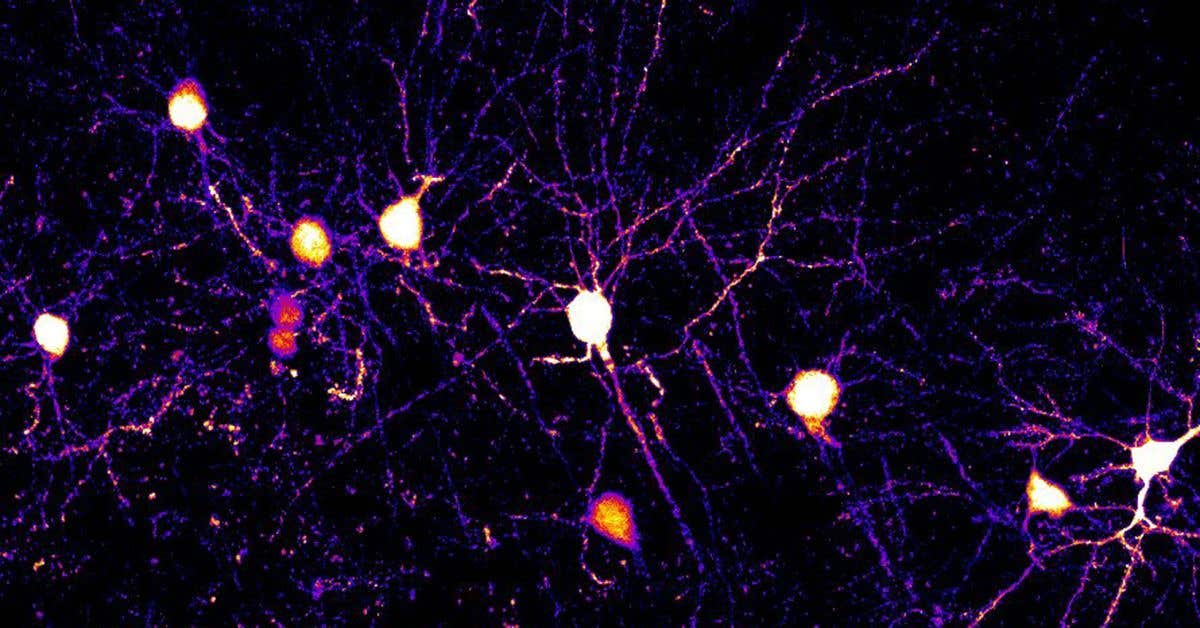Revolutionary nanopore sensor can detect diseases from a single molecule
Discover how nanopore technology is revolutionizing diagnostics and protein research with faster, precise detection of diseases and molecular analysis.

Nanopore chip technology is reshaping diagnostics with faster, more accurate tests and advancing protein research, promising personalized medicine breakthroughs. (CREDIT: Goeppert)
The study of ionic dynamics in nanopores has uncovered a groundbreaking phenomenon that could transform diagnostics and protein research. This advancement, led by a team of researchers, sheds light on how ions behave under different voltage polarities and provides a foundation for developing more precise diagnostic tools.
Nanopores, tiny openings just nanometers wide, offer unique properties that distinguish them from traditional sensing systems. When molecules pass through these pores, they influence ionic currents, creating detectable signals.
The latest research, published in the journal, Nature Nanotechnology, demonstrates that nanopores can exhibit both positive and negative capacitance, depending on voltage polarity.
Negative capacitance, a transient reduction in current, occurs during voltage switches to a negative state, while positive capacitance emerges under opposite conditions. These discoveries highlight the intricate interplay of ionic flux and charge storage within nanopores.
Experiments using conical nanopores filled with potassium chloride (KCl) solution revealed key insights into ionic behavior. Researchers applied voltage pulses ranging from −500 millivolts to +500 millivolts and observed distinct changes in ionic currents.
Under a negative voltage step, the ionic current gradually increased until equilibrium was reached, signifying an enriched state. Conversely, a positive voltage step caused ionic concentration to deplete, reducing current flow.
This phenomenon is attributed to concentration polarization (CP), where ion concentrations near the pore are either enriched or depleted based on the applied voltage. The enriched state—associated with negative capacitance—occurs as ions accumulate within the tapered region of the nanopore. Conversely, a depleted state corresponds to positive capacitance, marked by a traditional current spike.
Advanced simulations using COMSOL Multiphysics validated these findings, highlighting the time-dependent redistribution of voltage across the pore's resistive elements.
These simulations demonstrated the complex relationship between ionic flux, capacitance, and voltage polarity. They also emphasized the importance of a Warburg-like circuit element, which accounts for the slow decay of ionic diffusion within the nanopore.
Related Stories
Notably, the experiments and simulations showed that the equilibration time—the time required for ionic concentrations to stabilize—varies depending on the voltage applied. Negative voltage steps were associated with longer equilibration times, while positive steps reached steady states more quickly.
These results underscore the nuanced interplay of electrical and ionic dynamics in nanopores, which are key to their diagnostic potential.
Building on these discoveries, researchers have developed a nanopore-based tool that could revolutionize diagnostics. Current diagnostic methods often require large quantities of biological samples to detect diseases, but this technology is sensitive enough to analyze individual molecules.
Kevin Freedman, assistant professor of bioengineering at UC Riverside, explains, “Right now, you need millions of molecules to detect diseases. We’re showing that it’s possible to get useful data from just a single molecule.”
The device relies on nanopores to detect changes in ionic currents as molecules pass through. By accounting for both positive and negative capacitance, it achieves unparalleled sensitivity.
Unlike traditional sensors that require external filters—which risk losing critical information—the nanopore itself acts as a filter, preserving valuable molecular signals. This breakthrough significantly enhances the accuracy and reliability of diagnostic tests.
Freedman’s team envisions portable diagnostic devices small enough to fit in a USB drive. These devices could detect infections within 24 to 48 hours, a significant improvement over existing tests, which often take days to yield results. Such rapid detection could be invaluable in containing fast-spreading diseases. “Nanopores offer a way to catch infections sooner—before symptoms appear and before the disease spreads,” Freedman notes.
This technology also promises to improve the study of proteins, which play critical roles in cellular processes. Subtle differences in protein structures, often undetectable with current tools, can now be analyzed. Such precision could pave the way for personalized treatments, tailored to individual patients' needs.
The nanopore device moves scientists closer to achieving single-molecule protein sequencing, a long-sought goal in biology. While DNA sequencing deciphers genetic instructions, protein sequencing reveals how those instructions are expressed and modified in real time. This deeper understanding could revolutionize disease detection and treatment.
Freedman’s research, supported by a grant from the National Human Genome Research Institute, focuses on refining nanopore technology for single-protein sequencing. He believes these advances signal a shift in molecular diagnostics and biological research. “This tool moves us one step closer to personalized medicine,” Freedman states.
Protein sequencing offers unique advantages over DNA sequencing. While DNA provides a static blueprint of genetic information, proteins reveal dynamic changes in cellular processes. These changes can indicate early signs of diseases or subtle responses to treatment. By detecting these variations, nanopore technology opens the door to more effective therapies and preventative care.
In addition to medical applications, this research enhances our understanding of fundamental biological processes. Proteins drive nearly every function within cells, from metabolism to immune responses. The ability to analyze proteins at the single-molecule level provides unprecedented insights into these processes, enabling breakthroughs across multiple fields of science.
As nanopore devices become more affordable and accessible, they are likely to become standard features in both research and healthcare settings. Freedman anticipates their integration into everyday diagnostic kits for home or clinical use. “I’m confident that nanopores will become part of everyday life,” he says. “This discovery could change how we’ll use them moving forward.”
The development of nanopore technology reflects a broader trend toward miniaturization and precision in scientific tools. By combining advanced circuit modeling with innovative experimental techniques, researchers are creating devices that are not only smaller but also more capable. These devices promise to make cutting-edge diagnostics accessible to a wider audience, including resource-limited settings.
Looking ahead, the potential applications of nanopore technology are vast. Beyond diagnostics and protein research, nanopores could play a role in environmental monitoring, detecting pollutants or pathogens in water supplies. They may also contribute to advancements in synthetic biology, enabling the creation of engineered proteins with specific functions.
By bridging the gap between theoretical models and practical applications, this research underscores the transformative potential of nanopores. From accelerating disease diagnosis to advancing protein research, nanopore technology is set to redefine the future of science and medicine.
Note: Materials provided above by The Brighter Side of News. Content may be edited for style and length.
Like these kind of feel good stories? Get The Brighter Side of News' newsletter.
Joshua Shavit
Science & Technology Writer | AI and Robotics Reporter
Joshua Shavit is a Los Angeles-based science and technology writer with a passion for exploring the breakthroughs shaping the future. As a contributor to The Brighter Side of News, he focuses on positive and transformative advancements in AI, technology, physics, engineering, robotics and space science. Joshua is currently working towards a Bachelor of Science in Business Administration at the University of California, Berkeley. He combines his academic background with a talent for storytelling, making complex scientific discoveries engaging and accessible. His work highlights the innovators behind the ideas, bringing readers closer to the people driving progress.



